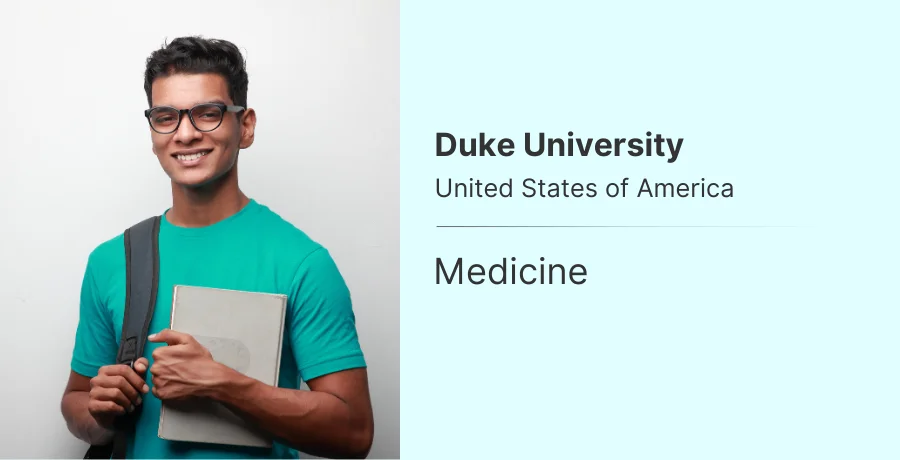University of Oklahoma– Highlights
The University of Oklahoma, established in 1890, stands as a premier institution known for its robust academic programs and extensive research opportunities. With a QS ranking of 601-650, it continues to excel in various domains, offering a conducive environment for learning and innovation. The university boasts state-of-the-art infrastructure, including modern classrooms, advanced laboratories, and extensive libraries. The faculty comprises experienced educators and industry experts, ensuring a high-quality education. The University of Oklahoma receives significant funding, aiding in the development of cutting-edge research and facilities. Accredited by the Higher Learning Commission, it maintains high standards of education and operational excellence.
- Established: 1890
- QS Ranking: 601-650
- Other Rankings:
- Top 100 Public Universities in the U.S.
- Top 50 Programs in Business
- Top 100 Engineering Schools
- Top 80 in Arts and Humanities
- Top 100 in Social Sciences
- Infrastructure: Modern classrooms, advanced laboratories, extensive libraries
- Faculty: Experienced educators and industry experts
- Funding: Significant funding for research and facilities
- Accreditation: Higher Learning Commission
University of Oklahoma Rankings
National Ranking: The University of Oklahoma is ranked among the top 100-150 universities in the United States, with notable strengths in aerospace engineering, meteorology, and business.
World Ranking: Globally, the University of Oklahoma is ranked within the top 500-600 universities, recognized for its research in fields such as engineering, environmental science, and education, according to QS World University Rankings and Times Higher Education.
To know more about other universities in the USA, click here.
University of Oklahoma- Admissions
Admission to the University of Oklahoma is highly competitive, attracting students from across the globe. With a diverse student body, international students make up approximately 10% of the total enrollment. The university offers two main intakes: Fall and Spring semesters. Its comprehensive infrastructure supports a wide range of academic and extracurricular activities, fostering a holistic educational experience.
UG Admissions
- High school diploma or equivalent
- Minimum GPA of 3.0 on a 4.0 scale
- SAT or ACT scores
- Personal statement and recommendation letters
- Proof of English proficiency (TOEFL/IELTS)
PG Admissions
- Bachelor's degree from a recognized institution
- Minimum GPA of 3.0 on a 4.0 scale
- GRE/GMAT scores
- Statement of purpose and recommendation letters
- Proof of English proficiency (TOEFL/IELTS)
Ph.D. Admissions
- Master's degree in relevant field
- Minimum GPA of 3.5 on a 4.0 scale
- GRE scores
- Research proposal and recommendation letters
- Proof of English proficiency (TOEFL/IELTS)
Eligibility Criteria
UG Programs
- Bachelor of Science in Engineering
- Bachelor of Arts in Humanities
- Bachelor of Business Administration
- Bachelor of Science in Computer Science
- Bachelor of Fine Arts
PG Programs
- Master of Business Administration
- Master of Science in Engineering
- Master of Arts in Humanities
- Master of Fine Arts
- Master of Public Health
University of Oklahoma -Programs
The University of Oklahoma offers a diverse range of undergraduate and postgraduate programs designed to cater to various academic interests and career aspirations. These programs are structured to provide students with both theoretical knowledge and practical skills.
UG Programs
- Bachelor of Science in Engineering: Comprehensive engineering programs with specializations in electrical, mechanical, civil, and more.
- Bachelor of Arts in Humanities: Diverse humanities programs including history, philosophy, and cultural studies.
- Bachelor of Business Administration: Focused on developing business acumen and leadership skills.
- Bachelor of Science in Computer Science: Cutting-edge curriculum covering software development, AI, and cybersecurity.
- Bachelor of Fine Arts: Programs in visual arts, performing arts, and design.
PG Programs
- Master of Business Administration: Advanced business strategies and management practices.
- Master of Science in Engineering: Specialized engineering disciplines with research opportunities.
- Master of Arts in Humanities: In-depth study in history, literature, and cultural theory.
- Master of Fine Arts: Advanced training in visual and performing arts.
- Master of Public Health: Public health policies, epidemiology, and health management.
University of Oklahoma Intakes
The University of Oklahoma, located in Norman, Oklahoma, offers three main intakes: fall, spring, and summer. The fall intake, starting in August, is the primary entry point for most undergraduate and graduate programs. The spring intake begins in January, and the summer intake starts in May for certain programs. Early application is advised to ensure consideration for scholarships and housing.
Accommodation
On-campus accommodation
The University of Oklahoma offers a variety of on-campus housing options, including dormitories and apartment-style living. Students can benefit from the convenience of being close to academic buildings and campus amenities.
Off-campus accommodation
For those preferring off-campus living, the university provides resources to help students find suitable housing options nearby. Off-campus accommodations often offer more independence and privacy.
Housing options
Dormitories, apartments, and private rentals.
University of Oklahoma Acceptance Rate
The University of Oklahoma has a moderately selective acceptance rate, typically around 80-85%. The university attracts a diverse range of applicants, particularly for its strong programs in engineering, business, and the arts. Admissions are based on a comprehensive review of academic performance, extracurricular activities, personal statements, and letters of recommendation. International students must also demonstrate English language proficiency.
Cost of Living in Norman
Norman, where the University of Oklahoma is located, offers a relatively affordable cost of living compared to major U.S. cities. Students should budget between $1,200 and $1,800 per month for living expenses, including accommodation, food, transportation, and personal expenses. Norman is known for its friendly community, vibrant student life, and cultural events, making it an appealing location for students.
Cost of Tuition Fees
The cost of tuition at the University of Oklahoma varies depending on the program and level of study. Below is a table with approximate figures:
| Program | Approximate Tuition Fees |
|---|---|
| Undergraduate | $25,000 per year |
| Postgraduate | $30,000 per year |
Cost of Living
The cost of living for students at the University of Oklahoma can vary. Below are approximate figures for monthly expenses:
| Expense | Approximate Cost |
|---|---|
| Rent, travel utility | $800 - $1,200 |
| Food & Drink, entertainment | $300 - $500 |
Scholarships
The University of Oklahoma offers a variety of scholarships to support students financially. Below is a list of the top 10 scholarships along with the maximum amount offered:
| Scholarship | Maximum Amount Offered |
|---|---|
| Presidential Scholarship | $10,000 |
| National Merit Scholarship | $15,000 |
| Dean's Scholarship | $8,000 |
| International Student Scholarship | $5,000 |
| Graduate Assistantship | $12,000 |
| Undergraduate Research Scholarship | $3,000 |
| Alumni Scholarship | $4,000 |
| Community Service Scholarship | $2,000 |
| Leadership Scholarship | $6,000 |
| Sports Scholarship | $5,000 |
To know about the USA study visa requirements, click here.
Placements
The University of Oklahoma has a strong placement record, with a placement rate of 85%. Graduates from various programs secure positions in top companies and industries. Below are the major job roles with the highest approximate salaries:
| Job Role | Approximate Salary |
|---|---|
| Software Engineer | $85,000 |
| Business Analyst | $75,000 |
| Mechanical Engineer | $70,000 |
| Data Scientist | $90,000 |
| Marketing Manager | $80,000 |
| Public Health Consultant | $65,000 |
University of Oklahoma FAQs
Q: What are the language requirements for international students at the University of Oklahoma?
A: International students must demonstrate English proficiency, typically through TOEFL or IELTS scores. The University of Oklahoma may also accept the Duolingo English Test as an alternative. Specific programs might have higher language score requirements.
Q: Can international students work while studying at the University of Oklahoma?
A: Yes, international students on F-1 visas can work on campus for up to 20 hours per week during the academic year and full-time during breaks. Off-campus employment is permitted under specific conditions, such as through Optional Practical Training (OPT) or Curricular Practical Training (CPT) programs.
Q: What scholarships are available for international students at the University of Oklahoma?
A: The University of Oklahoma offers several merit-based scholarships for international students, including the International Student Scholarship and various college-specific awards. Need-based financial aid may also be available for eligible students.
Q: How do I apply for student housing at the University of Oklahoma?
A: The University of Oklahoma provides a variety of on-campus housing options, including residence halls and apartment-style living. First-year students are generally required to live on campus. Housing assignments are made on a first-come, first-served basis, so early application is advised. Off-campus housing is also available in Norman and the surrounding area, with resources provided by the university.
Q: What is the average class size at the University of Oklahoma?
A: The average class size at the University of Oklahoma is around 25 students. While some larger introductory courses may have more students, most upper-level and specialized courses are smaller, typically ranging from 15-30 students, providing a more personalized and interactive learning environment.
Other Universities in USA, you might be interested in;
- University of North Carolina System
- University of Florida (Gainesville)
- Indiana University System
- Florida State University
- Vanderbilt University
- Rice University
- Washington University
- Dartmouth College
- University of Wisconsin System
- Ohio State University
- University of Washington
- Pennsylvania State University
- University of Minnesota System
- University of Arizona
- Arizona State University
- University of Colorado System
- University of Maryland System
- University of Alabama System
- University of Illinois System
- University of Georgia
- Boston University
- University of Rochester
- Purdue University
- Case Western Reserve University
- University of Missouri, Columbia
- Massachusetts Institute of Technology (MIT) Stanford University
- Harvard University
- California Institute of Technology (Caltech)
- University of Chicago
- University of Pennsylvania
- Princeton University
- Yale University
- Cornell University
- Columbia University
- Johns Hopkins University
- University of Michigan-Ann Arbor
- University of California, Berkeley (UCB)
- Northwestern University
- New York University
- University of California, Los Angeles (UCLA)
- Duke University
- Carnegie Mellon University
- University of California, San Diego (UCSD)
- Brown University
- University of LincolnVanderbilt University
- University of Wisconsin-Madison
- Tulane University
- Texas A&M University
- University of Miami
- Drexel University
- Emory University
- University of Houston
- University of Pittsburgh
- Tufts University
- Stevens Institute of Technology
- Boston College
- University of New Mexico
- New Jersey Institute of Technology (NJIT)
- Georgetown University
- Rutgers, The State University of New Jersey-New Brunswick
- Virginia Polytechnic Institute (Virginia Tech)
- University of Notre Dame
- Northeastern University
- University of Hawai'i at Mānoa
- Stony Brook University
- Indiana University Bloomington
- George Washington University
- Yeshiva University












